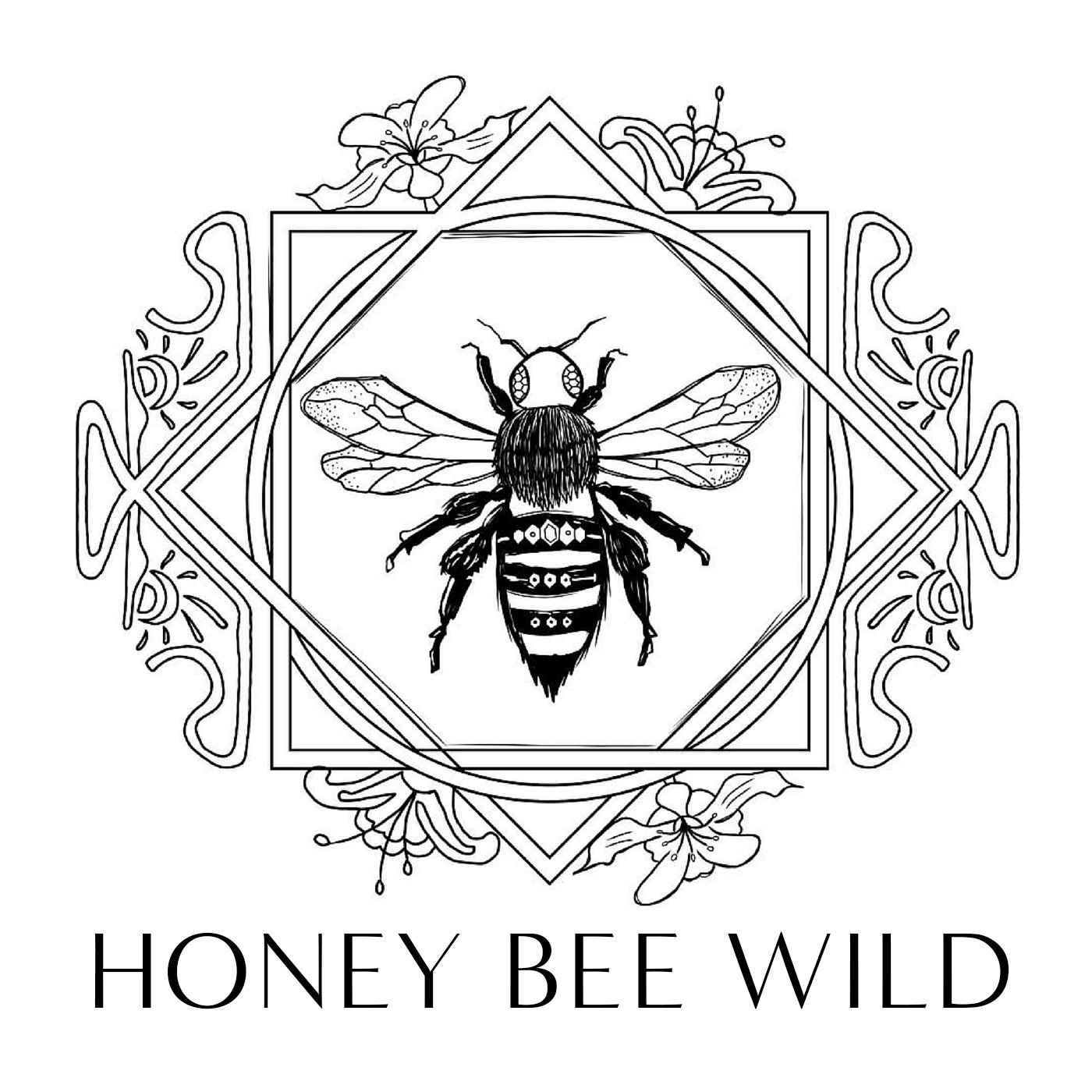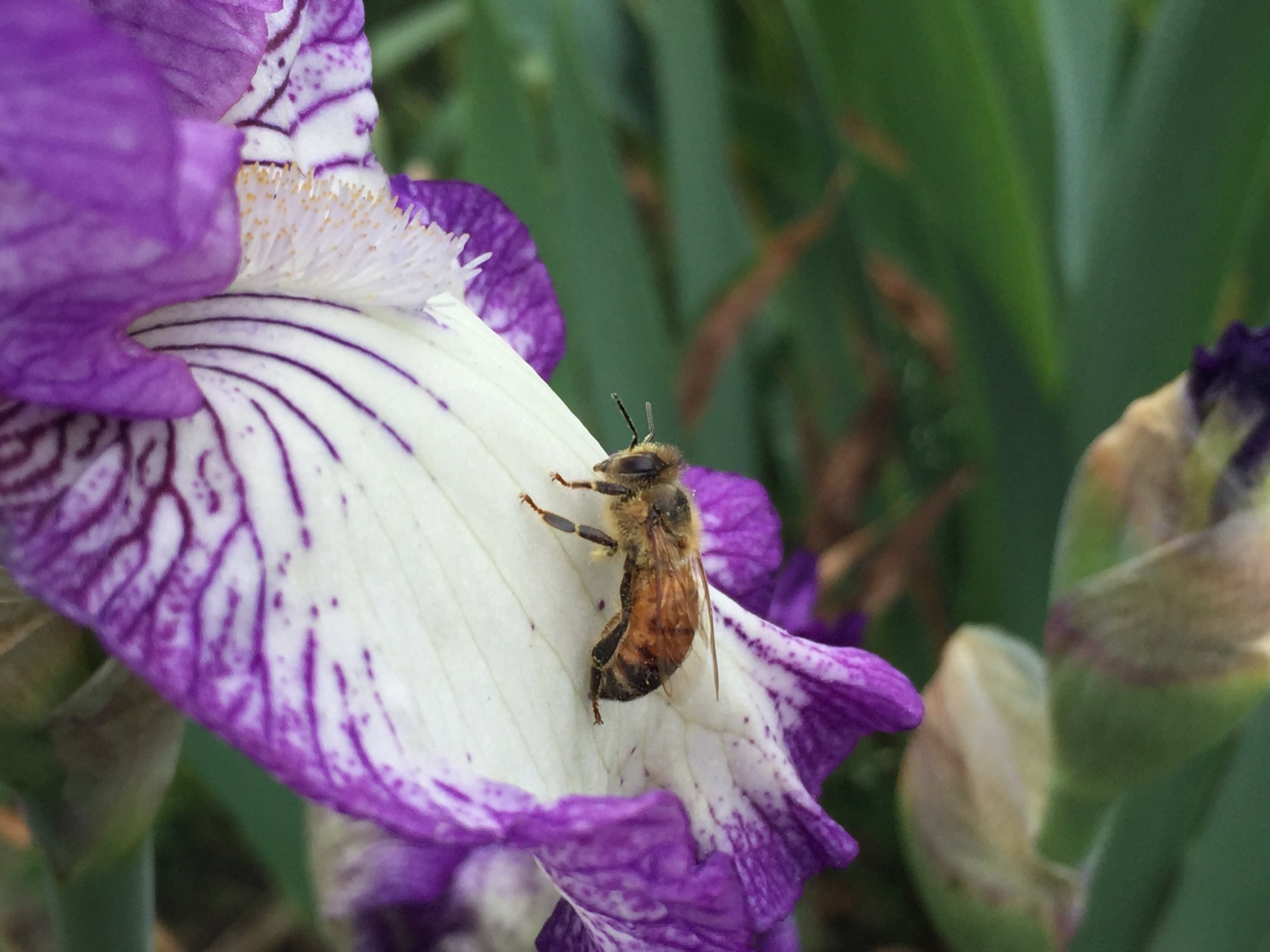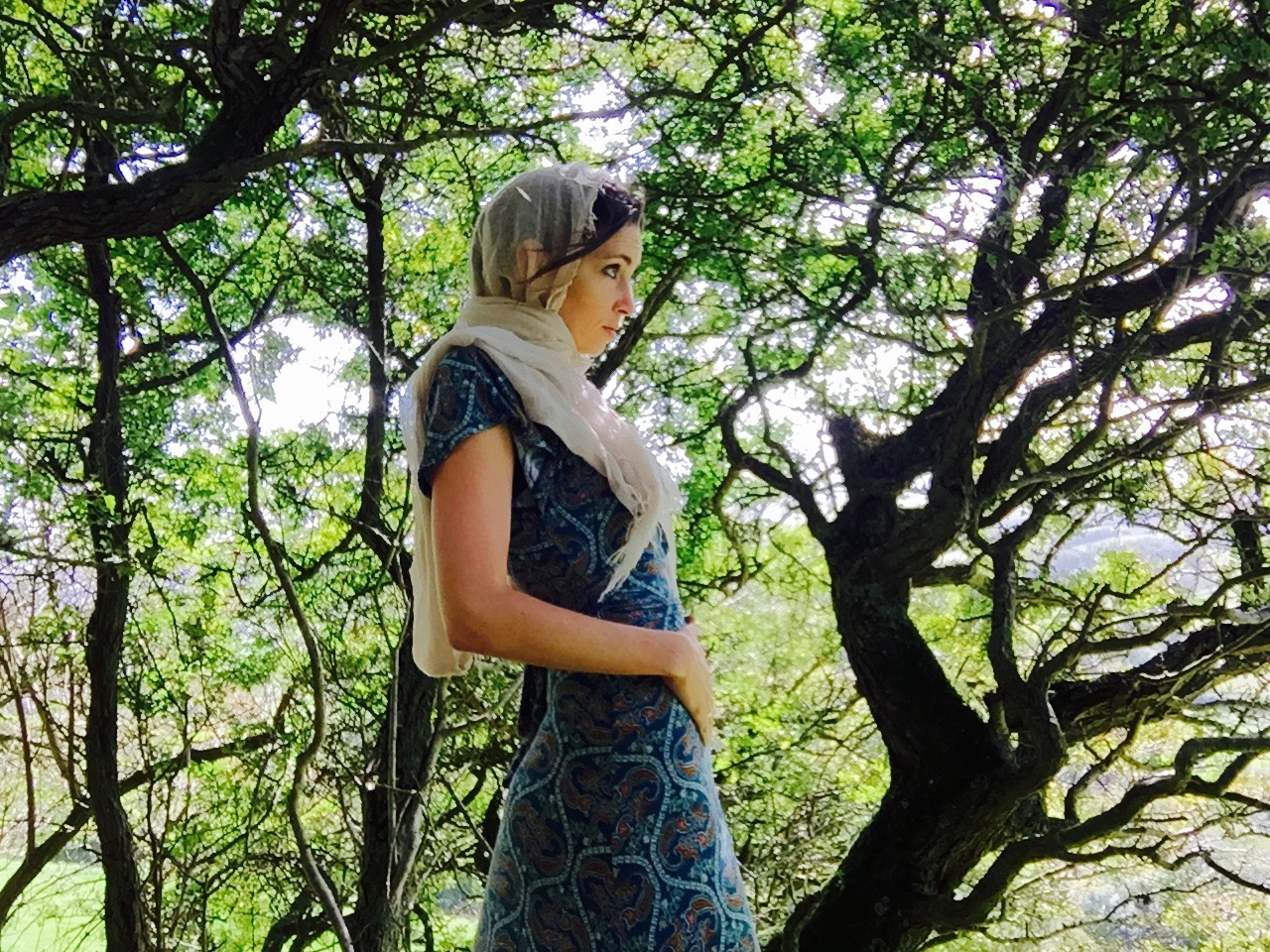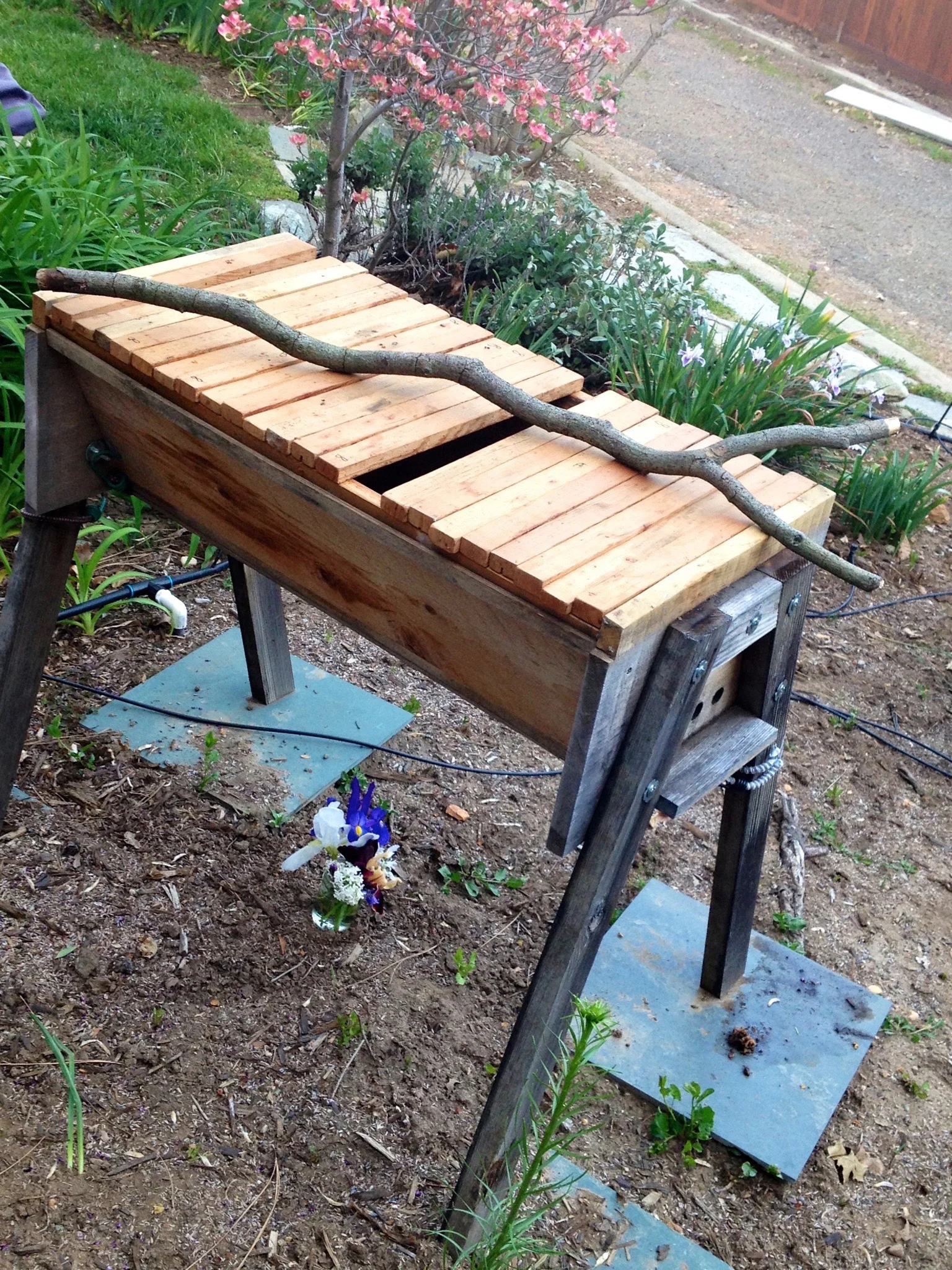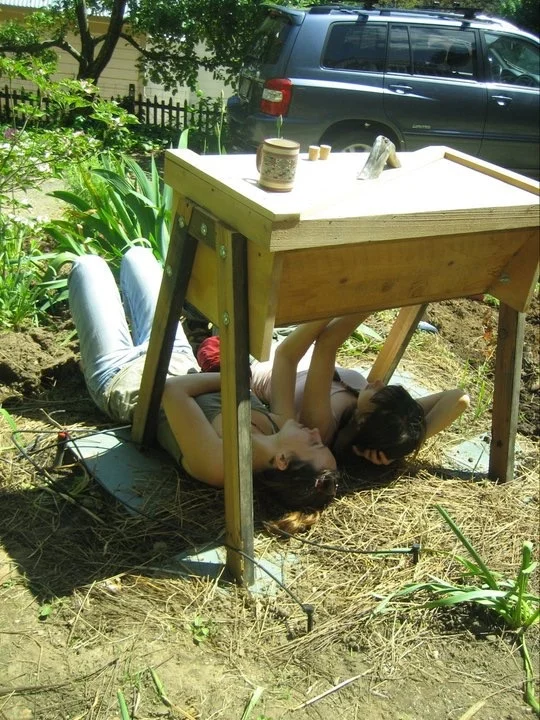Honey Bees as Heart Healers
We women of the bee work in cycles of six. Six-sided, six threads, six sisters, six revolutions. Six years. On this day, six year ago, I found out I was pregnant. It’s a old story really, one that’s been told before, in different words by different women, but it’s also my story with the bees, and therefore, it has a place here. I found out I was pregnant because of a dream. Not my own; that of a friend.
We women of the bee work in cycles of six. Six-sided, six threads, six sisters, six revolutions. Six years. On this day, six year ago, I found out I was pregnant. It’s a old story really, one that’s been told before, in different words by different women, but it’s also my story with the bees, and therefore, it has a place here. I found out I was pregnant because of a dream. Not my own; that of a friend. On this morning, six years ago I woke feeling dizzy and out of sorts. I phoned up a friend, who gently informed me that she had a powerful dream. “There’s nothing wrong with you honey," she said. "You’re pregnant.” The spirit of my daughter had come to her in a dream the previous night asking her to tell me about her and remind me to trust.
In that moment, standing dumbstruck on a busy sidewalk, I felt the most euphoric wash of warmth spread over me, and I understood unconditional love for the first time. I knew she was right. I was pregnant. It was the happiest moment of my life.
Three months later, I lost the baby. She left on a spring day when a late April storm brought fat, lazy snowflakes drifting down on the roses lining the hospital courtyard. I spent two days in that hospital, on the maternity wing, loosing my baby while listening to other babies being born between bouts of sleep and an emergency surgery. I dreamed then, during surgery, of myself giving birth while the spirit of my lost daughter acted as midwife. We were in ancient Greece, surrounded by women and the scent of beeswax and crushed herbs. I was in an order of priestesses that worked with the principals of parthenogenesis. I heard again to trust. It was year later, when I found out these priestesshoods actually existed and that many were associated with the Melissae, or honey bee priestesses.
A recovery bed was prepared for me in the guest room of my parent’s home. A bed which shared a wall with a colony of honey bees. You see, the summer prior, I had gone to The Sacred Trust in England to study with a British shamanic tradition called The Path of Pollen. My introduction to bees was not in fact through beekeeping, but rather through a very old tradition that sees the women of its ways as Melissae, Greek for Honey Bees. While I was in the UK, a wild colony of bees moved into a hole in the exterior wall of my parents home. They built honey comb and raised their young in the space between my recovery bed, and the outside world. The bees kept me company through the darkest hour of my life.
Miscarriage is common. It’s a story that countless women carry in their bodies and memory, but it's not a thing we talk about very often. We are told it’s common, that we’re probably still fertile and to try again. What isn’t included is that for some women, it can include postpartum depression and PTSD, not to mention the unyielding torrent of grief.
I buried what was left of my pregnancy in the garden, beneath an new, empty beehive I built myself. I prayed to the spirit of my baby to bring me bees so that I could be a mother to something. Three days later, I received a call about a swarm. It was my first. The swarm was hanging in the shape of a heart from a blossoming apple tree. Honey bees swarm are an act of reproduction, a great issuing forth of fertile optimism. It happens in the spring, once hives have made it through the long dark winter and new forage abounds. The colony prepares the hive mother (queen bee) for flight and waits for an optimal spring day to rise from the hive is a swirling cloud of wings. A third to half of the hive will leave with the initial spring swarm and fly to a nearby perch, such as a tree, where they will hang in a cluster until a new home is collectively agreed upon. The remaining bees inside the hive will raise a new virgin queen and life will proliferate. It is a truly magical event to witness.
Six years ago I became a beekeeper. A bee mother, in as far as one can mother a highly intelligent super organism that’s been thriving for thousands of years without human intervention. A bee guardian perhaps. Or rather, I fell in love. For me, they became the anchor through which I slogged through PTSD and heartbreak. They kept me tethered to life, when on some level, I just wanted to bleed out. They taught me about the honey and the sting. They were patient with me. They forced me to be present, and sharply brought me back to my body if I drifted. They permeated my dreams. The hummed the song of life, fertility, forgiveness and order. The bees made sure I kept feeling.
The grief story is a human story, and a story we all share. As author and teacher Sobonfu Somé says, “We need to begin to see grief not as foreign entity and not as an alien to be held down or caged up, but as a natural process.” So here I am, still grieving someone I never met. Here I am with tears of the empty womb, for the lost ones, for the motherless ones and the childless ones. Here I am, sitting at the precipice of another swarm season and wondering at the strange synchronicity of life. Wondering about what makes you a mother and when does it count to call yourself one? Is it when your baby is born? Is it when you conceive? Is it when bring a child into your home? Is it when you say yes to raising and caring for another life form?
We bee women work in cycles of six, and today marks six years. Today things are more piercing than usual. Today the memory is close, and the journey of healing is arching out behind me in its multitude of colors. Since that day, when I discovered I held the most precious spirit within my womb, I have started a business dedicated natural beekeeping, initiated dream workshops centred around the honey bee, worked intimately with women and their womb-stories, traveled multiple times back to England to train with The Path of Pollen and found home in a new city. In one week, I will embark on my sixth trip to England to study once more at The Sacred Trust.
Moving into my sixth year as an apiculturist, I am acutely aware of the gift bee-centric beekeeping can be to the beekeeper. Bees can be a bridge between ourselves and the natural world. A way to address the collective grief of nature-deficit disorder by engaging with a species vital to the weave of life on this planet. A way to serve. Beekeeping has been utilised to treat PTSD in veterans and assist in nature-based therapy for inmates in prison. It offers a reason to watch the seasons, to connect to the cycles of life and flowering plants. Without meaning to, we become aware of the fertility of the earth, the places we need to tend and coax into thriving, the places that offer prolific life-sustaining nectar. We hear the hum of a healthy hive, and we are soothed, even if we don’t understand why.
So often, my question is how do we serve the colony? How do we become bee-centric, and not human-centric? How do we see through the lens of the bee. But bee guardianship is a relationship, a two way street, an agreement. Every once in a while, I take a moment to remember the grace of what the honey bee offers us, because, she is after all, central to the fecundity of all life.
My daughter’s hive lived for four years, dying during the summer I moved away. Now, a tree is planted on the site of that old womb/tomb. I became a bee guardian because my womb needed to heal. Because my heart needed to know about the other side of grief. Because even in sorrow, the bees bring me immeasurable peace. Because every day that I grieve my childlessness and dream of a new womb-story, I am also reminded that there is an ineffable joy in the love between a bee and a flower. From that love the earth remains a fertile mother, showering her children in meadows.
Beautiful Homes for Ladies and Bees
Sometimes it's important to take a moment to simply appreciate beauty. Physical beauty. Beauty of nature. Beauty of place. Beauty of soul. I've been thinking a lot about beauty lately. Beauty as a power that evokes a sense of peace, wonder and love.
Sometimes it's important to take a moment to simply appreciate beauty. Physical beauty. Beauty of nature. Beauty of place. Beauty of soul. I've been thinking a lot about beauty lately. Beauty as a power that evokes a sense of peace, wonder and love. Beauty that comes from the natural world and is emulated time and again by art. Whenever I travel to places that have architecture older than the birth of my country, I am wistfully awed by the detail and artistry found in everything "old". The artistry found in homes, gardens, cathedrals, temples and pieces of furniture.
Beauty moves us. It inspires us. It is a powerful agent of spirit, and we are drawn to it in it's exterior and interior forms. This post is a nod to the human capacity to create art and beauty through the form of a home and a hive.




















These photographs are of a home I had the luxury to visit after completing my workshop in Bath. I spent a glorious afternoon and evening, surrounded by many bee sisters, soaking up the beauty of place, kinship, healthy food and deep rest. I am aware of the privilege of this experience, or the privilege to travel the world for please in the first place. I am aware of how many people are in incredible suffering while I write a post about a beautiful home. I often come up again this conundrum when appreciating beauty that comes from affluence. How can we appreciate or have privilege and luxury while remaining in service to creating a world with greater equality and less consumption? I don't have an easy answer, other to be fully present with where I am, feast or famine. If I am offered a room with a mural, a dip in a private pool and the most generous of meals by a kind sister, I will be in gratitude, I will ask myself to relax, I will be in my heart.
There is no better teacher for this kind of presence than nature. She, the Earth, the natural world, has a beauty, a wildness, that has captured the mind and imagination of artists and biologists alike. The incredible perfection of life-sustaining forces that create mathematically complex growth and movement patterns such as the spiral of a sunflower's seeds, the orbits of the planets or the hex of the honeycomb. Across many ancient and indigenous cultures, this interior world of the hive is one of the most highly regarded examples of nature's mysterious, divine beauty. Glyphs and art depicting the human reverence for the honey bee are found as far back as ancient Egypt and Sumer.
Have you ever seen the inside of a hive? Watched the bees move across comb? Been mesmerized by the coming and going of pollen-bearing, sun-glowing insects. And have you ever notices how this incredible beauty is so disregarded by the form and mechanized construct of the conventional bee hive. Langstroth hives, the white boxes you see lining desolate orchards in drought-stricken California for stark example, were built for humans in order to maximize honey production. They have very little to do with what is most beneficial for the honey bee colony. I'm not unequivocally against Langstroth hives. There are plenty of bee-sensitive beekeepers out there who use langstroth hives. If you go to a bee supply shop, you'll find supplies for a Langstroth, but you likely wont find top bar hives, log hives, golden ratio hives or Warré hives (unless you go to Bee Thinking in Portland!). I'll get into my pro's and con's, feels and theories about lang hives another time, but for now, lets just say, I've tried them out and we didn't become best buds.
There are so many hive styles out there, ranging from log hives found in trees (see Michael Thiele's work with log hives), to sun hives, to strange walled contraptions that are supposed to offer high-rise indoor observational viewing (iffy choice). I encourage anyone interested in getting bees to look into some of the back-to-nature, DIY hive styles out there. Alternatively, you can build or buy a Warré or Kenyan Top Bar hive - two top bar style hives that are relatively well known. Note: I'm not getting into the British national hives because it's not quite as well known in the states and I don't have enough knowledge.
Combining art and hive style, more and more beekeepers are getting into beautifying the exterior of their hives, and why not? We see such incredible beauty in nature's own work, why not show the reverence of the interior temple of the hive through our artistic additions to the exterior? If you decide to put your bees in a box (as opposed to a skep or log) and become responsible for them, why not let it be a box of personal artistry? Painted, carved, designed, and placed in a beautiful space - let your creativity come through.
Perhaps through this artistic weave between the human world and the non-human we can all find moments of presence with the beauty that is Spirit in form.
